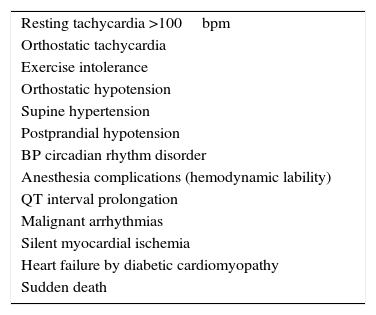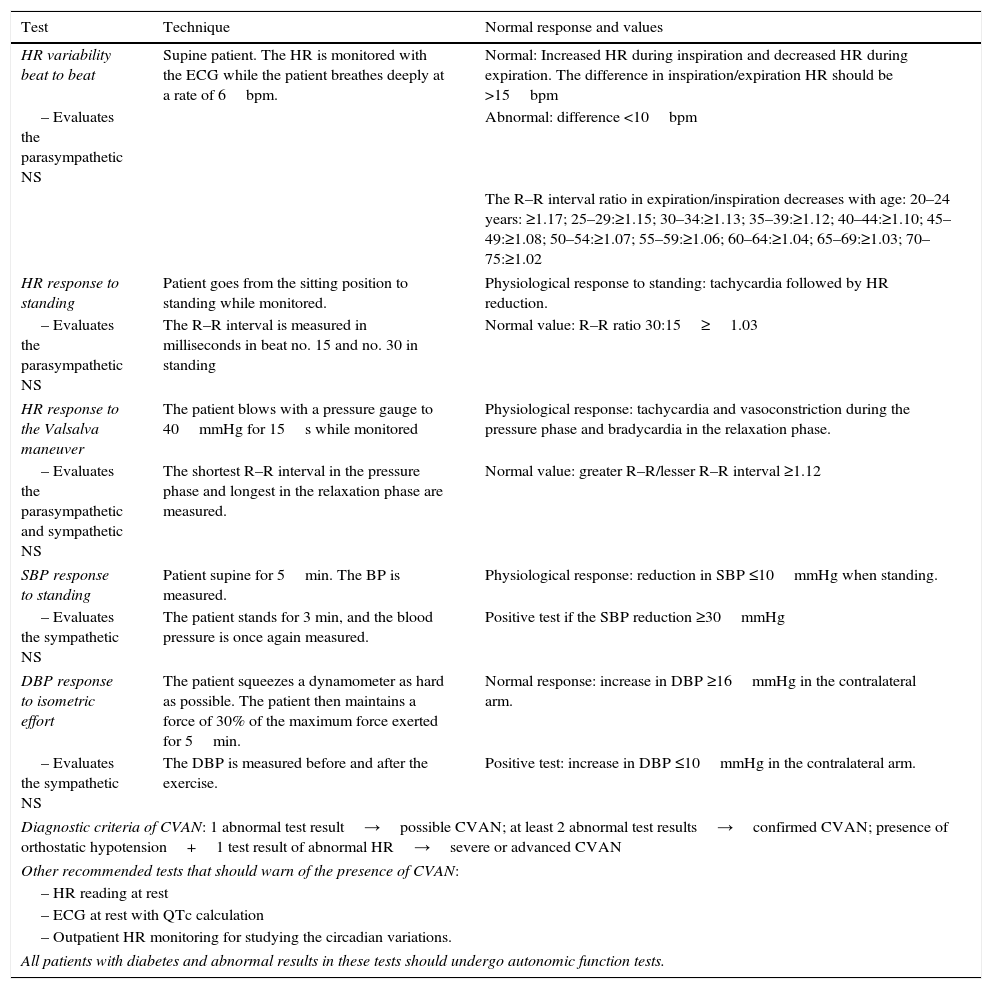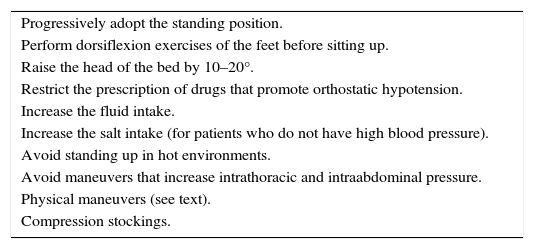Cardiovascular autonomic neuropathy associated with diabetes mellitus is caused by an impairment of the autonomic system. The prevalence of this condition ranges from 20% to 65%, depending on the duration of the diabetes mellitus. Clinically, the autonomic function disorder is associated with resting tachycardia, exercise intolerance, orthostatic hypotension, intraoperative cardiovascular instability, silent myocardial ischemia and increased mortality. For the diagnosis, the integrity of the parasympathetic and sympathetic nervous system is assessed. Parasympathetic activity is examined by measuring heart rate variability in response to deep breathing, standing and the Valsalva manoeuvre. Sympathetic integrity is examined by measuring blood pressure in response to standing and isometric exercise. The treatment includes the metabolic control of diabetes mellitus and of the cardiovascular risk factors. Treating symptoms such as orthostatic hypotension requires special attention.
La neuropatía autonómica cardiovascular asociada a la diabetes mellitus está causada por una alteración del sistema autonómico. Su prevalencia varía entre el 20 y 65% dependiendo de la duración de la diabetes mellitus. Clínicamente, el trastorno de la función autonómica se asocia con taquicardia en reposo, intolerancia al ejercicio, hipotensión ortostática, inestabilidad cardiovascular intraoperatoria, isquemia miocárdica silente y aumento de la mortalidad. Para el diagnóstico se evalúa la integridad del sistema nervioso parasimpático y simpático. La actividad parasimpática se explora midiendo la variabilidad de la frecuencia cardiaca en respuesta a la respiración profunda, bipedestación o maniobra de Valsalva. La integridad simpática se explora midiendo la presión arterial en respuesta a la bipedestación y al esfuerzo isométrico. El tratamiento incluye el control metabólico de la diabetes mellitus y de los factores de riesgo cardiovascular. Especial atención requiere el tratamiento de los síntomas tales como la hipotensión ortostática.
Article
Diríjase desde aquí a la web de la >>>FESEMI<<< e inicie sesión mediante el formulario que se encuentra en la barra superior, pulsando sobre el candado.

Una vez autentificado, en la misma web de FESEMI, en el menú superior, elija la opción deseada.

>>>FESEMI<<<










